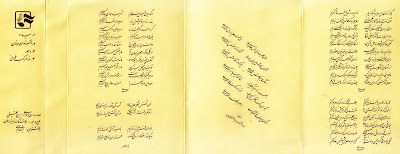IRISH-AMERICAN DANCE MUSIC & SONGS
Early Recordings from the late 1920's
with :
Frank Quinn
Sullivan's Shamrock Band
McKenna & Morrison
Pat White
John Griffin
The Flanagan Brothers
Patrick Killoran Orchestra
Folklyric Records, 1977, 9010
This is an interesting album about the importance of Irish-American recordings in the USA and in Ireland. This compilation gives a good picture of the kind of songs and music Irish artists used to offer to the public. The Irish market was bigger and bigger over the decades because of a huge immigration from the 1840's. The American recording companies were interested in this market; some of the production was more of the vaudeville type (track A7) but there is a good deal of more traditional music from musicians born in Ireland like P. Killoran or J. McKenna. The notes by Bill Healy are informative about all the bands and soloists presented here.
Folkyric Records are a branch of Arhoolie Records.
download.wav



















